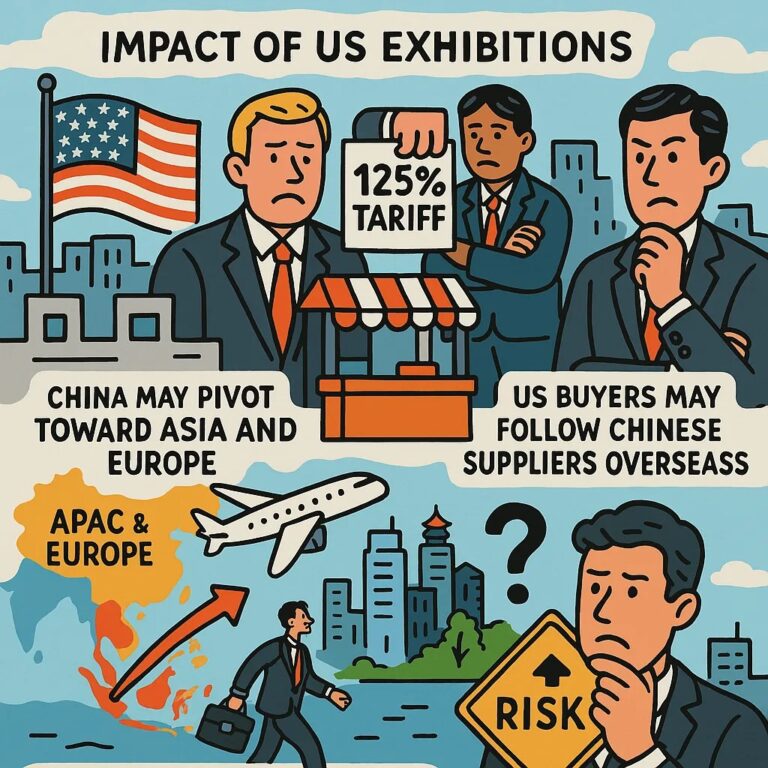On April 9, 2025, President Trump announced a 90-day pause on the recently imposed tariffs for nearly 100 countries.
At the same time, tariffs on Chinese imports were increased to 125%.
While the pause offers short-term relief to many exporters, the move also reinforces long-standing trade tensions – and raises new questions about the stability of the US as a global trade partner.

Economists such as Philip Pilkington noted even before the announcement that the Trump Administration would “choose between Wall Street and manufacturing.” It’s now clear that manufacturing has won out.
So what does this mean for the global exhibitions industry? The effect is difficult to calculate, but here are some of our thoughts.
Impact on US exhibitions
Tariffs on Chinese goods will likely deter Chinese participation in US shows. Higher costs and possible retaliation could reduce exhibitor diversity and show appeal. Major events like CES, MAGIC and IMTS could feel the squeeze.
- China may pivot toward Asia and Europe
The 125% tariff on Chinese imports will significantly reduce Chinese exhibitor participation at US-based trade shows.
Product sectors likely to be hit hardest include electronics, textiles, furniture, and light machinery, where margins are narrow and tariff costs are unsustainable.
We can expect a reallocation of exhibition spend to neutral markets like Singapore, Germany and the UAE – where access to global buyers is still possible without penalty.
- US buyers may follow Chinese suppliers overseas
Many US companies that rely on Chinese manufacturing are unlikely to sever ties — but they may shift where they meet.
Instead of meeting suppliers in Las Vegas or Chicago, buyers may now travel to Guangzhou, Shanghai or Bangkok to maintain relationships and source goods directly.
This could lead to modest increases in US buyer presence at key APAC and Middle Eastern exhibitions, especially in industries where Chinese supply is dominant.
- International confidence in US trade reliability may decline
Even with the 90-day tariff pause, the damage to US trade credibility may already be done.
Exhibitors and buyers alike are asking: If tariffs can be imposed and paused in 60-day cycles, how do we plan for the next two years?
In conversations with European organisers and trade bodies, confidence in the predictability of US trade policy is weakening. One European CEO was reportedly asked by shareholders to “de-Americanise” his workforce, Bloomberg reported.
For global companies, this could mean long-term shifts in where they choose to exhibit, build market share and invest.
Show organisers should factor geopolitical risk into their growth planning – especially when courting international participation in US shows.
- Organisers need to be highly flexible
The tariff pause expires in July. After that, the US could reimpose the same measures – or escalate further.
Organisers banking on a stable return to global participation could be left exposed.
Teams should diversify exhibitor outreach and work to maintain good communications with stakeholders in affected countries.
Contingency plans are now a requirement.
Source: www.exhibitionworld.co.uk


Comments are closed.